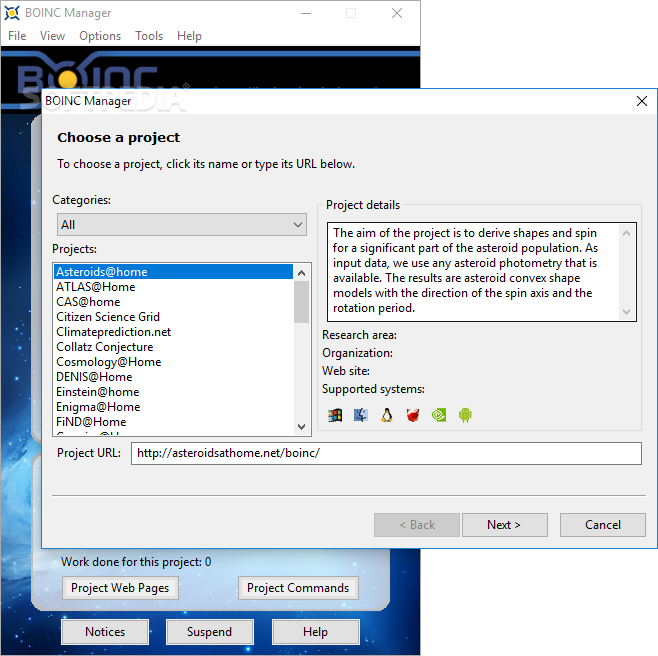

Segal B., Buncic P., Quintas, D., Gonzalez, D., Harutyunyan, A., Rantala, J., Weir, D.: "Building a volunteer cloud.," in Conferencia Latinoamericana de Computación de Alto Rendimiento, Mérida, Venezuela, 2009 B.: "Customizable Execution Environments with Virtual Desktop Grid Computing," in Parallel and Distributed Computing and Systems (PDCS 2007), Cambridge, MA, (2007) Merkel, D.: Docker: lightweight Linux containers for consistent development and deployment. C., Balaton, Z., Kacsuk, P.: "GenWrapper: A generic wrapper for running legacy applications on desktop grids," in 2009 IEEE International Symposium on Parallel & Distributed Processing, Rome, (2009) B.:"Homogeneous Redundancy: a Technique to Ensure Integrity of Molecular Simulation Results Using Public Computing," in 19th IEEE International Parallel and Distributed Processing Symposium (IPDPS'05) Heterogeneous Computing Workshop, Denver, (2005) Taufer, M., Anderson, D., Cicotti, P., III, C. of 9th International Computational Accelerator Physics Conference, (2006)

D.: "Massive Tracking on Heterogeneous Platforms," in Proc. P.: "BOINC: A System for Public-Resource Computing and Storage," in 5th IEEE/ACM International Workshop on Grid Computing, Pittsburgh, PA, (2004) P., Reed, K.: "Celebrating diversity in volunteer computing," in 42nd Hawaii International Conference on System Sciences (HICSS '09), Waikoloa, HI, (2009)Īnderson, D. Kondo, D., Bahman, J., Malecot, P., Cappello, F., Anderson, D.: "Cost-Benefit Analysis of Cloud Computing versus Desktop Grids," in 18th International Heterogeneity in Computing Workshop, Rome, (2009)Īnderson, D. Mohammadi, M., Bazhirov, T.: "Comparative benchmarking of cloud computing vendors with high performance linpack," in Proceedings of the 2nd International Conference on High Performance Compilation, Computing and Communications, Hong Kong, (2018)Īmazon, "Amazon EC2 Spot Instances Pricing,", (2019) Heien, E., Kondo, D., Anderson, D.P.: A correlated resource model of internet end hosts. Toth, D.: "Increasing Participation in Volunteer Computing," in IEEE Parallel and Distributed Processing Workshops and PhD Forum (IPDPSW), Shanghai, (2011) ITers News, "Huawei to launch Kirin 980,", (2018) , "How Many Computers are There in the World?,", (2014) Berkeley has a listing of these on its website."Publications by BOINC projects,", (2018) Additionally, home users of the client can continue using it to help other BOINC-based projects.
#Boinc berkeley download software
The forum and website will remain open, and they will allow researchers to use the software for other things such as cosmology and pulsar research. They are calling the closure hibernation instead of cancelation because it is not completely shutting things down. We need to focus on completing the back-end analysis of the results we already have, and writing this up in a scientific journal paper." "It's a lot of work for us to manage the distributed processing of data. "Scientifically, we're at the point of diminishing returns basically, we've analyzed all the data we need for now," said project heads in the forum. The reason for the "hibernation" of the project is that it has come to a "point of diminishing returns." It essentially created a massive supercomputer with over 5 million users at its height. The program would crunch the data, then send back the results and retrieve another work unit. Chunks of data were sent out from Berkeley's BOINC (Berkeley Open Infrastructure for Network Computing) network to project members. The client acted as a screensaver only running while the computer was idle, but could be set to run continuously.
#Boinc berkeley download install
The way it worked is, users would download and install the software. It was a crowd-sourced public effort to comb through data collected by radio telescopes looking for anomalous signals or patterns. The project was started in 1999 by the University of California at Berkeley. The Search for Extra-Terrestrial Intelligence announced it is ending on March 31. At last count, it had "approximately 527,880 active hosts providing a massive average 5.428 petaFLOPS of computational power." In 2011, the network it ran on (BOINC) was listed by Guinness as the world's largest computing grid. Fun facts: launched on and gathered millions of participants from hundreds of countries to concentrate their computing power on crunching data obtained from radio telescopes.


 0 kommentar(er)
0 kommentar(er)
